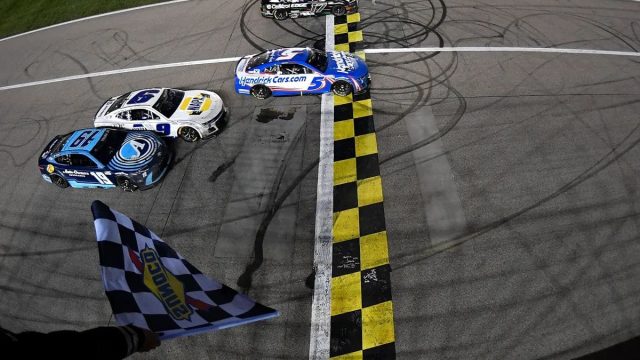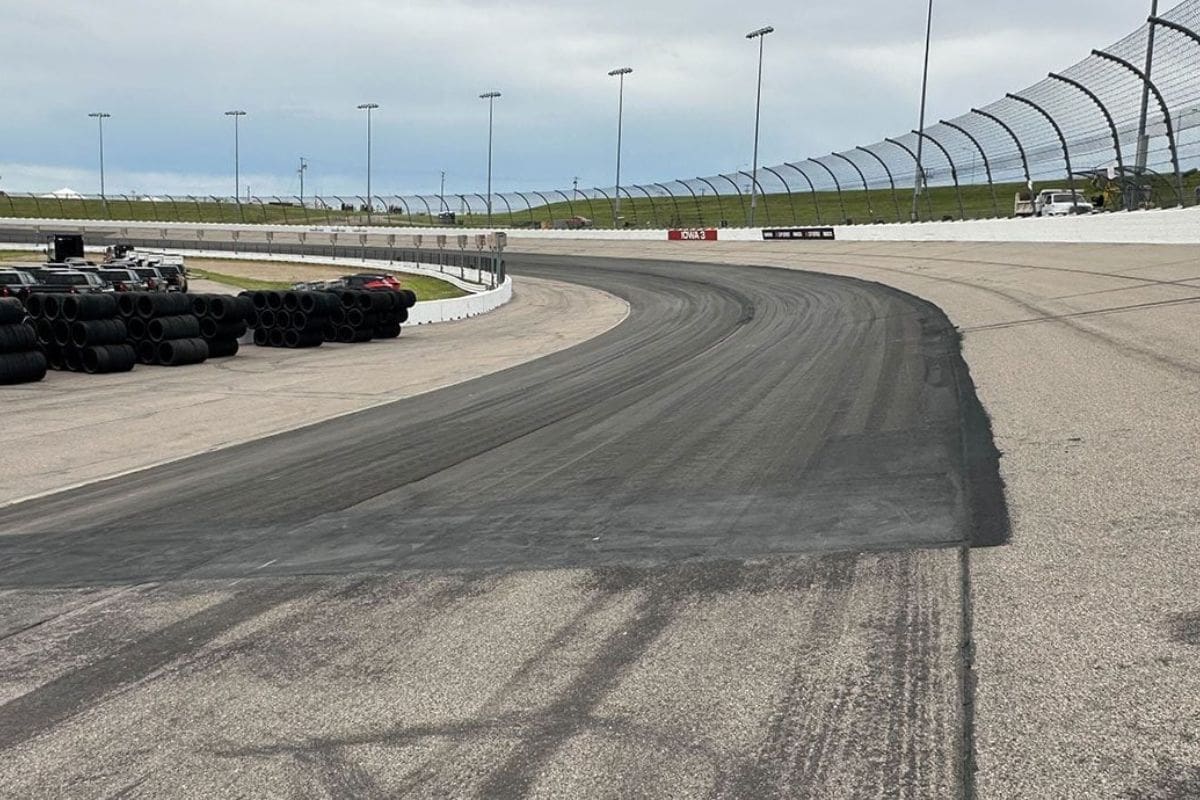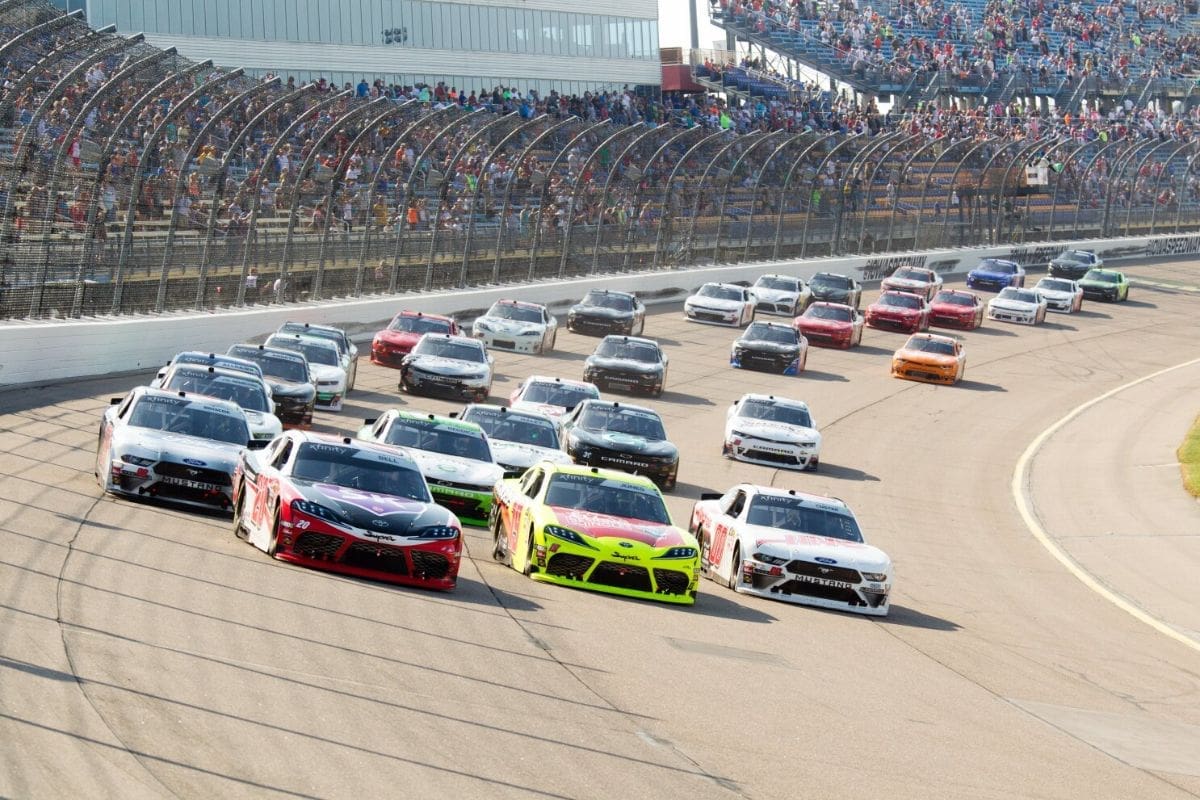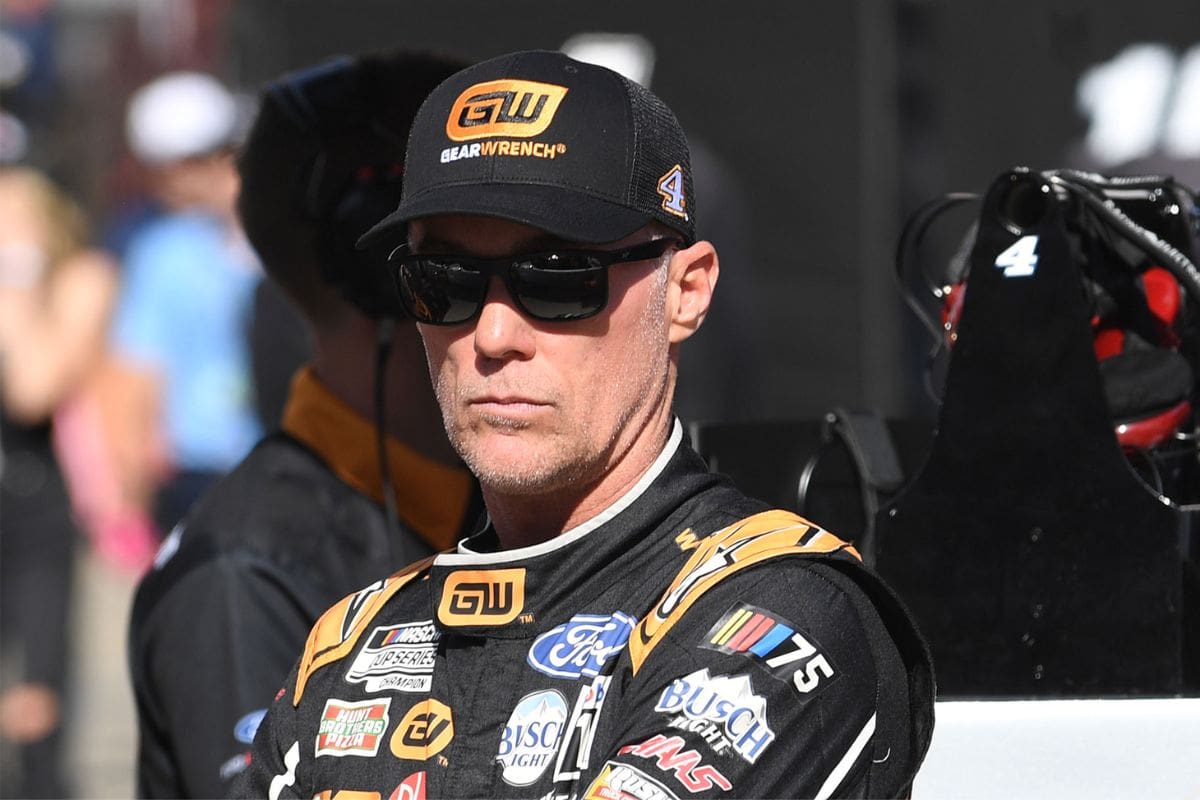Inside NASCAR’s Iowa Speedway: Inside NASCAR’s Iowa Speedway, drivers are navigating the freshly repaved surface, which presents both opportunities and challenges. The new track conditions demand preparation, split-second decisions, and adaptive strategies. Lane selection becomes essential for mastering the track’s unique demands, affecting car handling and speed. Criticism, particularly from Kevin Harvick, on the repaving approach, highlights the concerns over inconsistent traction and altered grip levels. These dynamics are reshaping strategies and adding a layer of unpredictability.
Key Highlights
- Repaving Concerns: Kevin Harvick criticizes the repaving efforts, calling them ill-timed and poorly executed, reflecting broader concerns within the racing community.
- Track Condition Variability: The freshly paved surface with large patches leads to inconsistent grip levels, complicating driver strategies and race day performance.
- Lane Selection Impact: Lane choice is crucial for handling and speed on the short track, requiring quick adjustments due to the new surface conditions.
- Driver Preparation: Drivers must adapt to the unique demands of the freshly paved Iowa Speedway, focusing on in-depth data analysis and strategic setup.
- Race Day Anticipation: Fans and teams eagerly await the unpredictable race at Iowa Speedway, curious about how the new track conditions will influence the outcome.
Introduction and Anticipation
With the NASCAR Cup Series set to descend upon Iowa Speedway this Sunday, the racing community is filled with anticipation and speculation about how the newly paved short track will impact the competition. The track conditions are a focal point of excitement, with the fresh asphalt promising both opportunities and challenges.
Drivers and their teams are carefully preparing for the unique demands this short track imposes, knowing that even the slightest miscalculation can greatly affect race outcomes. Driver preparation is paramount as the Iowa Speedway presents a distinctive set of challenges. The smooth, newly paved surface may offer more grip, but it also requires carefully adjusted approaches to cornering and braking.
Teams are deeply engaged in fine-tuning their cars, relying heavily on simulation data and previous short track experiences to inform their strategies. The communication between drivers and their crews will be tested as they make real-time adjustments to optimize performance under these novel conditions.
Fan engagement is reaching new highs as spectators eagerly await to see how their favorite drivers will adapt. Expectations are soaring, with fans anticipating high-speed duels and strategic approaches that capitalize on the track’s fresh surface. The adrenaline rush that accompanies the green flag is palpable, and racing tactics will be under intense scrutiny as teams vie for dominance.
Strategies and Insights from Drivers
Top NASCAR drivers William Byron, Kyle Larson, Alex Bowman, and Chase Elliott share insights into their carefully developed strategies for excelling on Iowa Speedway’s short track. Their experiences offer a wealth of information on how to manage the unique challenges posed by this demanding circuit.
Understanding track conditions is crucial. Byron emphasizes the importance of adapting to the ever-changing surface of the short track. ‘Temperature and rubber build-up can greatly alter grip levels,’ he notes.
Equally essential is the driver mindset. Larson highlights the mental agility required to make split-second decisions. ‘Staying focused and being prepared to react instantly is key on such a tight track,’ he asserts.
Data analysis plays a key role in refining strategies. Bowman uses advanced telemetry to dissect every lap. ‘We scrutinize the data to identify areas for improvement, whether it’s braking points or throttle application,’ he explains.
Performance setup is another cornerstone of success. Elliott shares that adjustments to the car’s suspension and aerodynamics can offer a competitive edge. ‘Fine-tuning the setup to match the track’s specific characteristics can make all the difference,’ he says.
- Understanding Track Conditions: Regular assessment to adapt to changes in grip and surface.
- Driver Mindset: Maintaining focus and mental agility for quick decision-making.
- Data Analysis: Using telemetry to identify performance improvements.
- Performance Setup: Tailoring car adjustments to the specific demands of the track.
Importance of Lane Choice
Mastering the complexities of lane selection at Iowa Speedway can make or break a driver’s performance, as the choice directly impacts car handling, speed, and strategic positioning throughout the race. The 0.875-mile track demands quick adjustments in speed and braking, testing drivers’ reflexes and instincts to the limit. Lane selection, thus, becomes a critical element of racing strategies, as it can provide substantial competitive advantages.
William Byron emphasizes that lane choice is vital at any track, particularly so at Iowa Speedway. According to Byron, selecting the appropriate lane assists the car with optimal launches and precise corner placement, which are crucial for gaining an advantage. The track dynamics at Iowa Speedway are such that the right lane can greatly affect a driver’s ability to maintain speed and control through its varying turns.
Driver perspectives on lane selection highlight its importance. Alex Bowman points out the perils of getting stuck in the outside lane, which can severely hamper progress and disrupt carefully laid-out racing strategies. Conversely, Kyle Larson and Chase Elliott offer insights based on their extensive experience, suggesting that the benefits of different lanes can vary significantly depending on the specific characteristics of each track. Elliott aptly notes, ‘It depends on the track,’ showing that adaptability is key.
“Bristol, you have one loop; sometimes you’re already at the top and it’s better instead of fighting for the top. And then in a place like Martinsville, yeah, you probably would want to be at the bottom. But sometimes, you can make some ground on the top at Martinsville as well. It totally just depends on the track.” – Elliott
For instance, while the bottom lane could be preferable at Martinsville, the top lane might offer unexpected opportunities for advancement.
Concerns about Newly Paved Roads
While lane choice remains a critical factor in race strategy at Iowa Speedway, discussions have increasingly shifted towards the implications of the recent paving efforts on the track’s performance dynamics.
NASCAR’s Elton Sawyer acknowledged that although repaving the entire track was not initially planned, specific problem areas demanded attention. The resulting uneven tracks have introduced a new layer of complexity, extending the bottom lane and raising certain sections higher than before. These paving problems have necessitated significant driver adjustments, altering the traditional racing challenges at this venue.
Track conditions remain a central concern. Uneven surfaces can disrupt grip and tire wear, leading to unpredictable vehicle behavior, especially at high speeds. Drivers must now recalibrate their strategies to manage these variations, making pre-race preparations and in-race adaptability more critical than ever. The new paving has created a dichotomy in the track surface, where half the course retains its original grip characteristics while the other half demands a different driving approach.
- Uneven tracks: Introduced variations in surface height complicate maintaining consistent speed and handling.
- Paving problems: Targeted repairs have led to inconsistencies, challenging driver expectations and vehicle performance.
- Track conditions: The dual nature of the track necessitates a more detailed understanding of grip and wear patterns.
- Driver adjustments: Adaptation to the new surface is crucial, requiring enhanced focus and flexibility during races.
Kevin Harvick’s View
Kevin Harvick did not mince words when expressing his frustration over the recent repaving efforts at Iowa Speedway, calling it ‘one of the biggest mess-ups we could possibly have this year.’ Harvick’s criticism came during the Iowa Weekend preview by FOX, where he openly questioned the decision-making process behind the repaving.
‘I’m not sure who made that decision to repave that race track like that,’ he remarked, pointing to the ill-timed and seemingly haphazard approach to track maintenance. – Harvick’s
Harvick suggested that the original asphalt, despite its issues, could have been patched temporarily to avoid the current debacle.
Harvick’s criticism has resonated deeply within the racing community, stirring varied driver reactions. Many share his concerns about the track conditions, which have introduced a new variable into an already unpredictable sport. The freshly repaved surface, with its ‘big a** patches,’ as Harvick so vividly described, could have a significant impact on performance. Drivers must now adapt their strategies to navigate the altered grip levels and inconsistent traction, adding an additional layer of complexity to race day.
The performance impacts of these changes are yet to be fully understood, but they have unquestionably heightened race day excitement. Fans and teams alike are interested to see how the NASCAR Cup Series unfolds at Iowa Speedway under these new conditions. While NASCAR officials maintain that the track is fully operational, the true test will come when the rubber meets the road.
News in Brief: Inside NASCAR’s Iowa Speedway
The intricacies of Iowa Speedway, from strategic lane choices to the implications of newly paved roads, highlight the constant evolution of NASCAR racing. Insights from seasoned drivers, including Kevin Harvick, reveal a landscape where adaptability and precision are paramount.
As the sport continues to advance, understanding these subtle dynamics will be essential for both competitors and enthusiasts. Iowa Speedway remains a proof to the ever-changing challenges and excitement inherent in professional racing.
Our Reader’s Queries
Q. Does NASCAR go to Iowa Speedway?
A. NASCAR is making history this weekend by bringing a Cup Series race to Iowa Speedway for the first time ever. The action-packed weekend kicks off on Friday night with the ARCA Menards Race, setting the stage for an exciting lineup of races.
ALSO READ: NASCAR Drivers Criticize Iowa Speedway Revamp as ‘Unusable’



